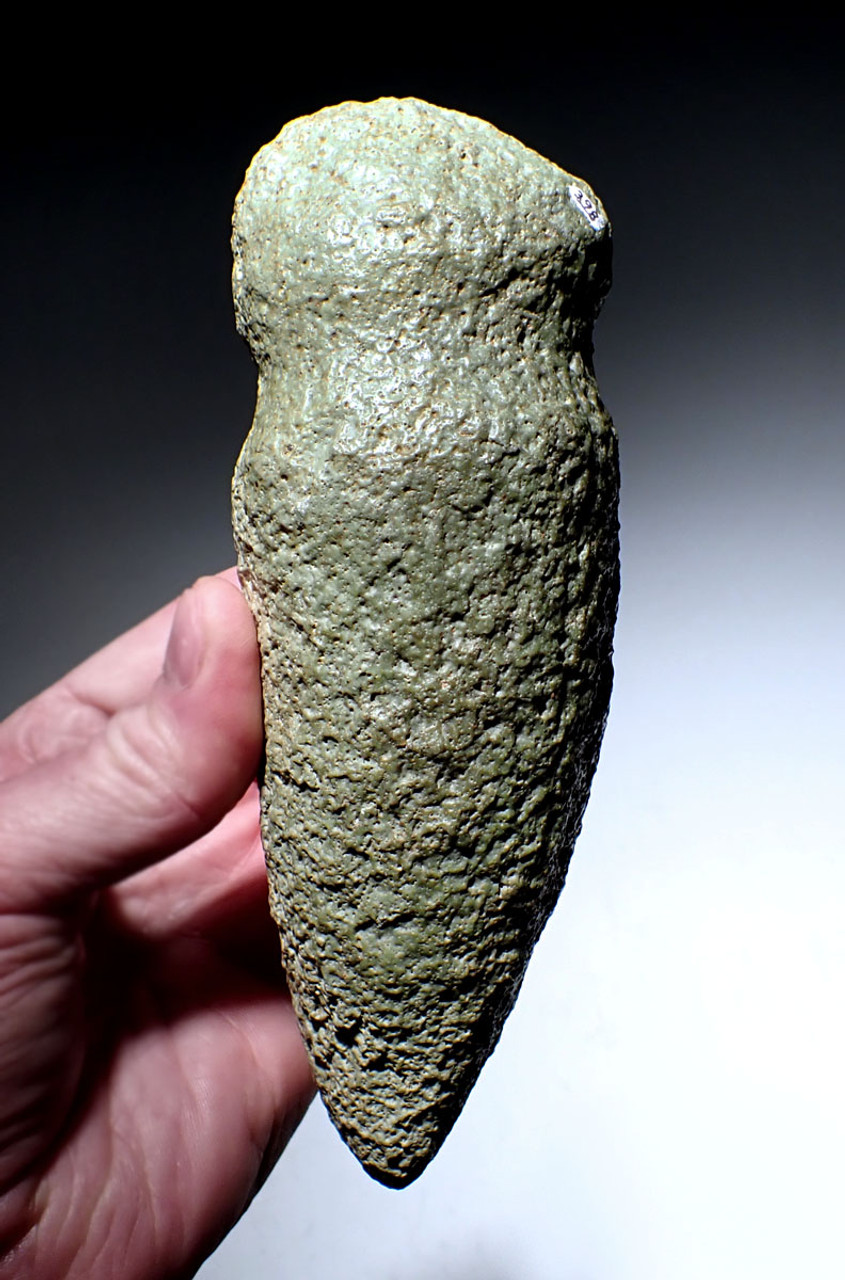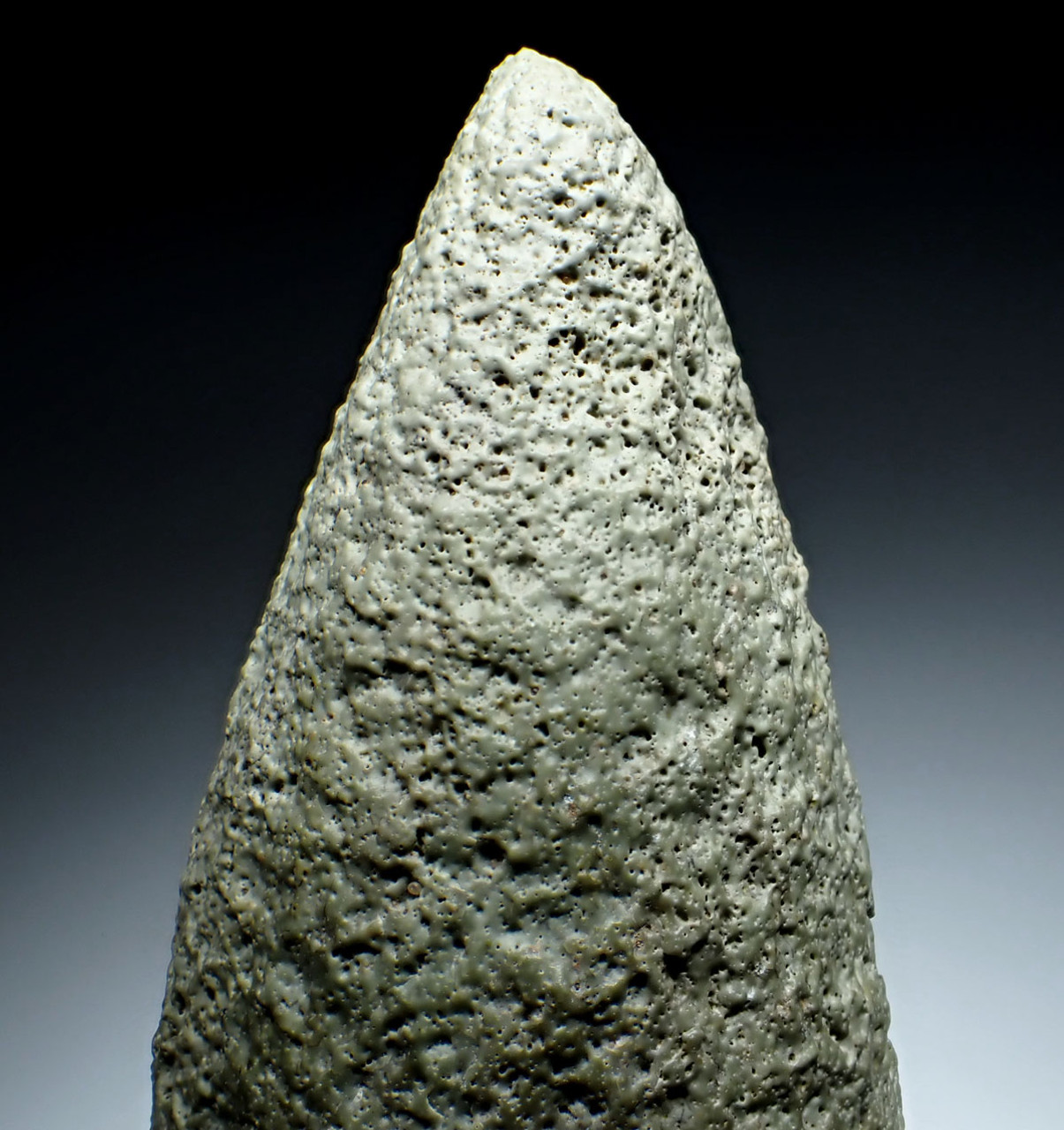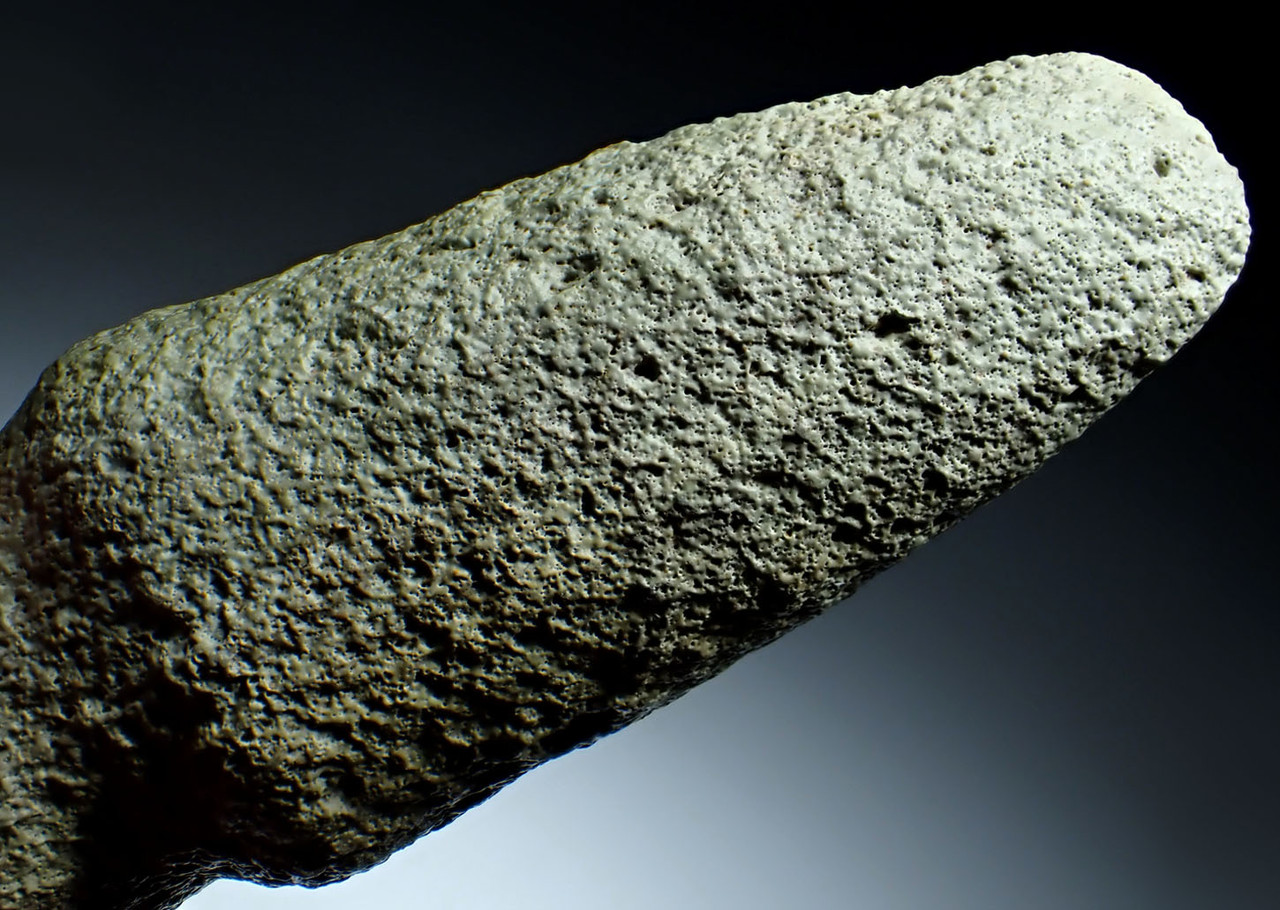Product Description
SEE MORE AFRICAN NEOLITHIC TOOLS
On a dinosaur fossil-hunting expedition in 2000 by a team of scientific explorers led by Paul Sereno, a paleodune and ancient lakebed site was discovered that yielded over 200 ancient burials of Kiffian and Tenerian people. The scientific findings showed that this area was once a humid lake region that was home to a hunter-fisher-gatherer people. The area became known as the "Green Sahara" for its once fertile and habitable landscape. Noted paleontologist, Dr. Paul Sereno, famous for other Saharan dinosaur discoveries, shot into the archaeological spotlight with his discovery of the ancient lakebed cemetery at Gobero in Niger in the year 2000. Interred in the many burials were numerous stone tools, ceramics, shells, beads and bone harpoons typical for the lifestyle of these ancient people of the Green Sahara. This RARE and exceptional AUTHENTIC artifact is similar to the specimens found at Gobero. It comes from the same period and Tenerian Neolithic Culture of that famous discovery.
The ground stone celt axe is a staple in all Neolithic cultures of the world. With many features that make this an extremely unique version of the celt axe, this is probably one of the most unusual examples of this type of axe. First, it comes from the African Tenerian Neolithic - a culture that RARELY are ANY objects ever seen on the market. In addition, the type of stone that this axe was made from is highly unusual and mostly only seen in the Tenerian Neolithic - vesicular basalt. The vesicular basalt of this specimen is a SURREAL mint green that has been polished smooth by the silica deposition of a phenomena called "Desert Varnish". It gives the surface an appearance similar to melting ice cream!
Adding to these unique features are the form of this example. While most Neolithic ground celt axes are flattened in their cross-section, this one is cylindrical and bullet-shaped. The chopping end is more of a penetrating point with a tapered and flattened tip. The rear of the axe has a rounded hammer end that shows a piece missing in antiquity, from actual use. The grooved end also allowed this axe a better way to have it lashed and hafted to a wooden handle shaft. There is a slightly curved form like an adze to one aspect of the side profile. This could have been used as a deadly effecting weapon that could have penetrated an enemy's skull for an instant kill, or used in woodworking to build dugout canoes to navigate the lake regions of the day. Of all the Tenerian Neolithic material we have seen in person and published, this is THE ONLY EXAMPLE we have seen like this. Ancient sediment deposits are still intact in all micro-crevices - a trait only seen on authentic stone tools.
Objects like this are legendary of archaeology and no other ancient or prehistoric stone tool culture in the world has ever matched the workmanship and beauty of the artifacts from the Tenerian culture. The stone type alone, is immediately recognizable as coming from only one place on the planet - the Tenere region of the south central Sahara Desert. This is an exceptional example of these "mascot" objects of this Neolithic society.
The region where these were once found is now protected and likely picked clean and long since fully collected, by modern nomads. We were very fortunate to have acquired an old French private collection of these artifacts, formed by their excursions in the 1960's and 1970's. Nevertheless, we have a very limited amount and once sold, we will never be able to replace them. Objects from the Tenerian African Neolithic culture are so rare that not even most major museums have a single object in their collection.
HISTORY
The Earth has been warming and cooling for millions of year, well long before humans were on the planet. One of the most dramatic examples of climatic change in the last 10,000 years is the desiccation of what is now the Sahara desert. Prior to as recent as 3000 B.C., the South Central Sahara region in Africa was a humid lake savanna. It was home to a thriving culture of ancient humans known as the Tenerians and before them, the Kiffians. The occupation of this area by these two peoples occurred continuously from around 7700 B.C. to the drying of the Sahara in 2500 B.C..
In the final Pleistocene and early Holocene Periods around 10,000 years ago, the South Central Sahara Desert was once a highly favorable environment for hunters, gatherers and pastoralists. Freshwater lakes existed between the dunes in what is now the Tenere region, Lake Chad was eight times its current size, the highlands supported Mediterranean forest trees, and a diverse variety of both large and small fauna flourished there. The slow drying out process of the Sahara, began 7,000 years ago and ended 4500 years ago resulting in the barren conditions that exist to this day. As we progress through time from the end of the Pleistocene towards the end of the Neolithic Period there, we see humans relying more on meat from raised animals as opposed to hunted animals that once roamed wild in the formerly Green Sahara.
 US DOLLAR
US DOLLAR
 EURO
EURO
 AUSTRALIAN DOLLAR
AUSTRALIAN DOLLAR
 CANADIAN DOLLAR
CANADIAN DOLLAR
 POUND STERLING
POUND STERLING


















